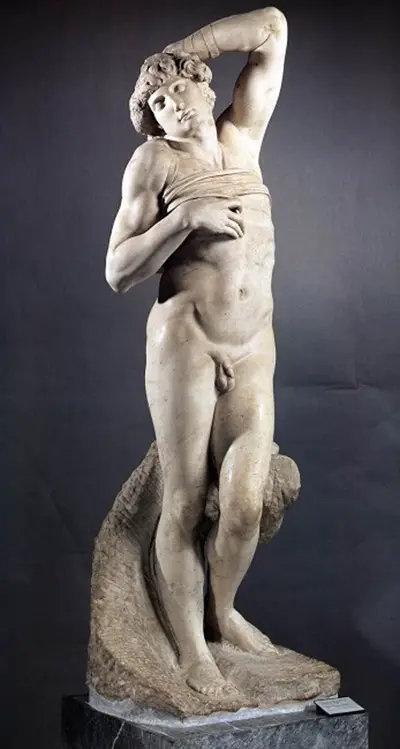Each one may be distinguished from the others through distinct differences in their posture and physical attributes. This has led to them being named individually. Some viewers may even have a favourite among the four, such as the Awakening Slave.
Michelangelo tackles issues of freedom with this series. The artist has addressed a topic that is on the minds of people in the modern world constantly, in different ways. While some people may feel constrained by their work, others my feel limited by their financial situation. In various ways, men and women of all ages find themselves unable to fully be the way that they want to.
Michelangelo's talents as a strategist show in his desire to complete this piece. He has chosen a topic that may perhaps always resonate with people everywhere, ensuring that his work will always have a place in society. He is one of the best artists to tackle such a complex topic. He brings out emotions that people sometimes prefer to keep hidden in favour of political expediency or physical well being.
Michelangelo embraced the venture for the tomb of Pope Julius II in 1505. He was quite prolific and often worked on several pieces at once. He was known for leaving his works of art in a state of constant progress. The artist started to cut the Slaves in 1513, as a major aspect of an altered venture.
The older and younger slaves are often viewed as two contrasting figures. These two slaves express completely extraordinary feelings. The one known as the Dying Slave is sublimely youthful and great looking. He is evidently in a profound state of rest. The other, called the Awakening Slave, is a coarser figure whose entire body appears to be occupied with a fierce battle.
Michelangelo expected both statues to be ready in time for the wonderful funerary landmark initially made arrangements for and by Pope Julius II — a venture which was over and over altered amid forty years of progressive projects. On the pope's demise, the venture changed at the end of the day, for monetary reasons. Michelangelo then gave The Rebellious Slaves to Roberto Strozzi, who conveyed them to France.
The iconographical subject is something of a secret and this adds to the mystery associated with The Rebellious Slaves. There are only a few pieces of information for art historians and other viewers to use. In fact, apart from the figures, there is little past the figure of a monkey which is roughed out next to the diminishing slave. Perhaps these hostage figures symbolise the enslaved areas that Michelangelo lived in. He was known to be frustrated with the Medici family and their policies. The set of figures here may be another visual protest against their rule, such as with the bust Michelangelo sculpted of Brutus.
Then again the Arts, decreased to bondage by the pontiff's passing, may be represented by the figures which are enslaved. Maybe they have a part to play in his everlasting triumph. The Platonic subject was known to motivate Michelangelo so The Rebellious Slaves may speak to the human soul, troubled by the body. An unprecedented level of constraint radiates from these tormented bodies and their condition of deficiency strengthens the impression of force.
The notoriety of these four effective statues is linked most importantly to their incomplete state. They are a portion of the finest cases of Michelangelo's constant working practice, alluded to as non-finito. The trouble experienced by the craftsman in cutting out the figure from the square of marble is important since it is symbolic of the battle of man to free the soul from matter. The Bearded Slave, Atlas and even the relatively young or naive Awakening Slave are all struggling to free themselves.
As you appreciate the Prisoners from various points, one can notice Michelangelo's affection and comprehension of the human life structures. The Prisoners' heads and faces are the slightest created parts, yet they are able to speak with their postures, known as the exemplary contrapposto or counter stance. The Slaves are remaining with a large portion of their weight on one foot so that their shoulders and arms turn off-pivot from the hips and legs. This exact posture gives the Prisoners a more intense and dynamic appearance, transmitting movement and feeling.
Regardless of whether chiseling, painting, or drawing, Michelangelo ingrained a feeling of wonder in his works, catching the enthusiastic and profound force in the curving, solid assemblages of his subjects. Michelangelo himself stated that he saw the heavenly attendant and cut until he set him free.
These models have been deciphered from multiple points of view. As we see them, in different phases of fruition, they summon the gigantic quality of the inventive idea as they attempt to free themselves from the bonds and physical weight of the marble. It is currently thought that the craftsman purposely left them deficient to speak to this unceasing battle of individuals to free themselves from their material trappings. This would certainly be an effective way to get this point cross. Often in society people may see the end results of struggle as beautiful, without taking the time to consider the level of work, determination and pain that went into producing something new.


